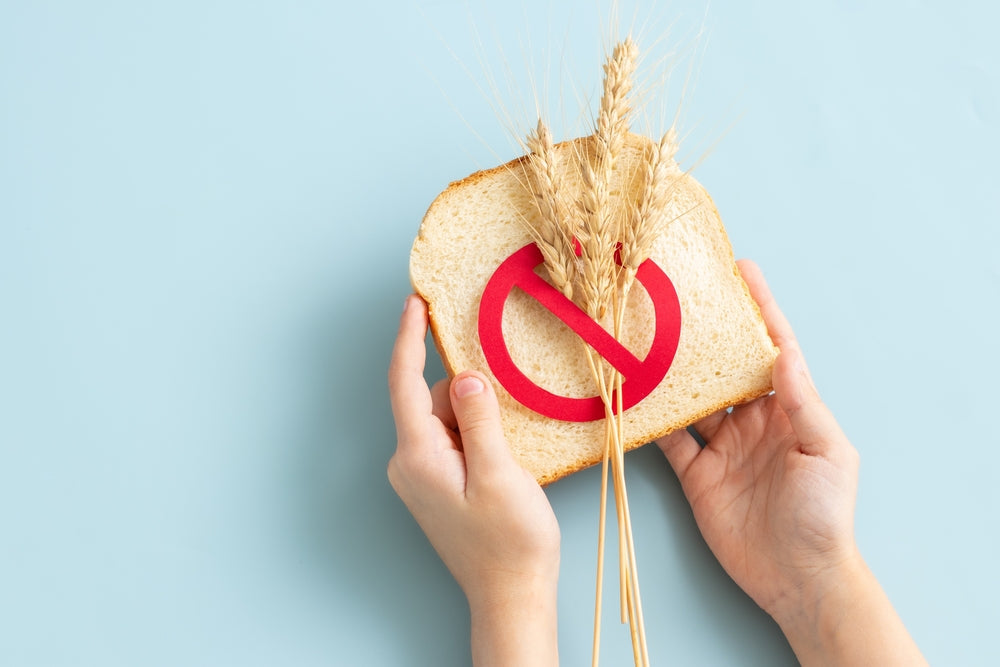
Trying to find safe food while travelling?
Or looking at a product with three gluten-free logos?
This guide cuts through the confusion to show you which certifications actually protect you and which ones you can trust.
The Big Three You Can Always Trust
These certifications offer the strongest protection globally. When you see these symbols, you can eat with confidence.
GFCO (Gluten-Free Certification Organization) sets the gold standard at 10 ppm. They operate in over 20 countries through their SGS network. In 2020, they redesigned the official GFCO certification mark to make it easier to identify.
AOECS (Association of European Coeliac Societies) covers 35+ countries. You'll recognise their Crossed Grain Trademark that is present in Europe. They maintain a 20 ppm standard.
NSF International has strong coverage in North America and is expanding worldwide. They use a 20 ppm standard with tough facility checks.
If you need to pick just one, GFCO offers the strictest standard. For Europe, AOECS works brilliantly. NSF is your best bet in North America.
Europe Makes It Easy
Europe leads the world for gluten-free safety.
EU Regulation 828/2014 made "gluten-free" mean 20 ppm across the EU and EEA.
The AOECS crossed grain symbol appears on many gluten-free products. While in restaurants, look for dedicated gluten-free menus.
Italy stands out with over 4,000 certified restaurants. Italian law requires gluten-free options in schools, hospitals and public places.
The UK still follows EU standards despite Brexit. Coeliac UK handles licensing of the crossed grain trademark for products and runs a reliable restaurant scheme with over 3,000 accredited venues.
Other European countries have varying levels of support, with many AOECS member societies offering certification programs alongside the European system.
North America Offers Choices
The US has multiple certification options, but more doesn't always mean better.
The FDA allows "gluten-free" claims at 20 ppm without any certification. However, to be safe, look for GFCO certification (10 ppm) or NSF (20 ppm). Everything else comes second.
Canada has great gluten-free standards because Health Canada's 20 ppm rule has real teeth. Although, if you need stricter protection, GFCO and Pro-Cert offer 10 ppm certifications.
Latin America Has Surprises
Argentina leads the region with ANMAT's 10 ppm standard and their new "SIN GLUTEN" logo. It's actually safer than many developed countries.
Chile's Fundación Convivir operates one of the world's strictest programmes at just 5 ppm.
Brazil lacks specific gluten-free rules despite being the largest country in South America. Most other countries rely on international certifications like GFCO and BRCGS.
Most of the World Offers Little Protection
Africa has no reliable certification systems outside South Africa and Egypt. Stick to whole foods and traditional dishes made with teff, cassava and millet.
Asia varies wildly. Singapore only introduced 20 ppm standards in 2025. India is developing frameworks through FSSAI. Everywhere else leaves you mostly on your own.
China, Japan and Southeast Asia offer minimal protection. International hotel chains and Western restaurants provide your safest options.
Australia and New Zealand Set the Bar Highest
These countries maintain the world's strictest standards at effectively 0-5 ppm.
Their national certification symbols offer complete trust.
Both Coeliac Australia and Coeliac New Zealand run comprehensive programmes. Even international certifications like GFCO must meet their zero-tolerance requirements.
Your Travel Reference
Europe: Look for the AOECS crossed grain symbol.
North America: Choose GFCO or NSF certification over basic FDA claims.
Australia/New Zealand: Their national symbols represent the world's safest standards.
Everywhere else: Stick to whole foods or GFCO-certified products.
Warning signs: No certification, vague terms like "gluten-conscious," products from countries without standards.
When All Else Fails
Rice-based dishes and naturally gluten-free whole foods work anywhere in the world.
Most countries offer little real protection for people with coeliac disease. Know your safe regions, plan ahead and always have backup food options.
If your gut plays up while travelling anyway, consider Cosmic Hue as a way to help maintain digestive comfort during challenging travel periods.
This guide gives you the knowledge to travel confidently and eat safely wherever your journey takes you.
Author: Manny is the founder of Fifth Ray and certified Gut Health Coach. After battling Crohn's Disease for 16 years he transformed his gut health through plant-based healing. His story has been featured on BBC, ITV, and Daily Mail.
Please note this information is for educational purposes only, not medical advice. Cosmic Hue is not intended to diagnose, treat, cure, or prevent any disease. Always consult your healthcare provider before making changes to your health routine.

